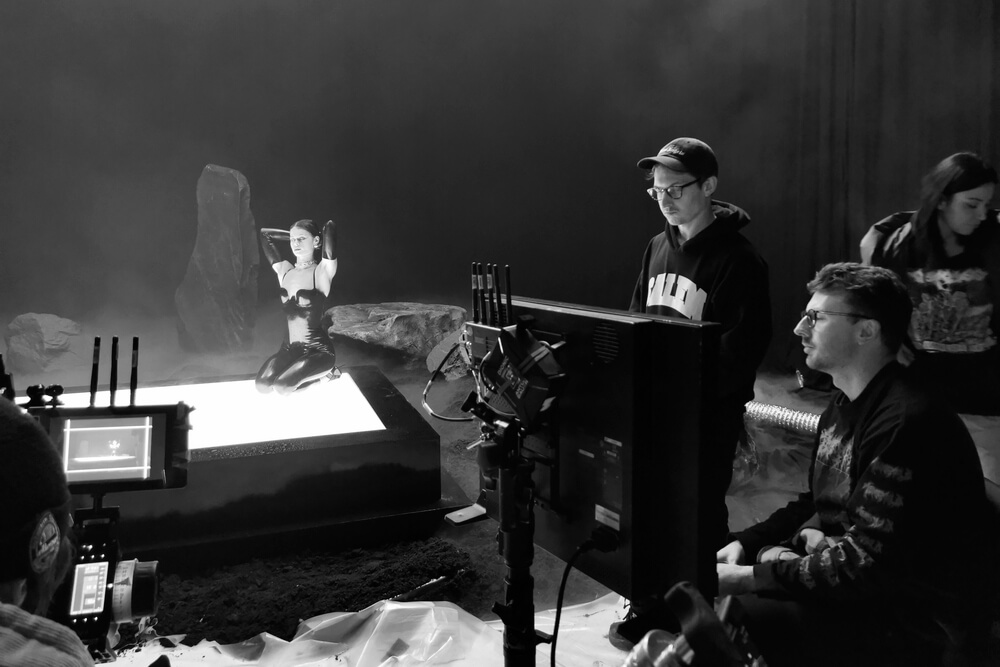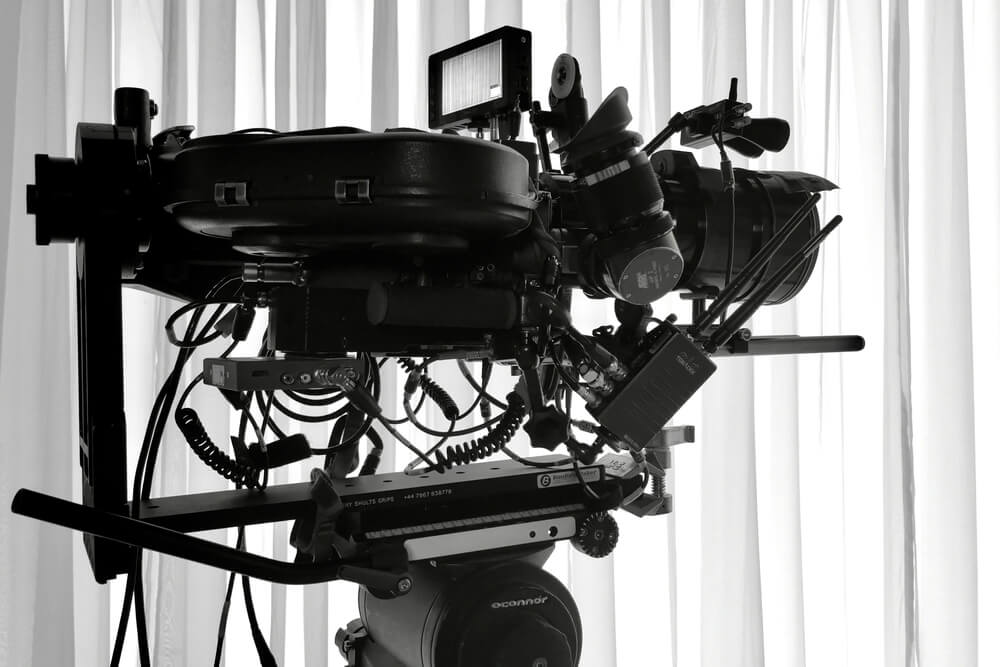Shooting and Directing an Ultra-Stylish Promo

Films created for advertising purposes have long served as a test bed where talented filmmakers can hone their craft and stretch their creative muscles. With the short promo film Ultra Platinum (1999), sibling directors George and James Beattie used the format for just that purpose, partnering with cinematographer Jeremy Valender to craft a signature vision that acknowledges its cinematic forebears without sacrificing any of its cutting-edge impulses.
The filmmakers worked closely with Panavision London, shooting on film with a modified lens mount that allowed them to capture a vertical anamorphic squeeze with Primo Anamorphic optics. Panavision recently caught up with the filmmakers via email for their insights into the avant-garde collaboration.

Panavision: How would you describe the look of the Ultra Platinum (1999)?
George & James Beattie: Tectonic, metallic and measured. A symphony of slashes and cuts.
Jeremy Valender: Visually, we were pushing for something reminiscent of big films from the late ’80s and early ’90s — fairly classical by today's standards but with its own edge. We leaned on a lot of tungsten sources with simple bounces and clips to build the world the Beatties had imagined.
How did you communicate with one another over the course of production to ensure you were envisioning the film in the same way?
George & James: From our initial conversation with Jeremy, we outlined some rules to inform our capture: dolly, primes, and movement which had a real weight on screen. We quickly homed in on a common language by sharing visual references and describing the quality of the light and simplicity of the camera moves. Jeremy introduced the flip format, which provided a supremely three-dimensional image — all the characteristics of anamorphic presented in the taller frame we desired.

What were some of those visual references you shared?
George & James: In terms of the tonality and atmosphere, we were greatly influenced by cinematographers such as Harris Savides [ASC] and Darius Khondji [ASC, AFC], that beautiful darkness of the spectrum. We would always talk about their palette and lighting — ‘We want that Khondji look!’
Iconic, big picture commercials such as [the 1999 Guinness spot] ‘Surfer’ by Jonathan Glazer are so powerful and truly resonate with us. Classics! We were also interested in vintage perfume adverts, Ridley Scott visuals, and the iconic shows from Alexander McQueen.
Jeremy: We shared some visual references, but nothing that became a hero image. We knew we wanted it to feel like something that had come before but to also have its own feeling. Shooting a boxy [aspect ratio] with a 2x anamorphic really allowed us to find something familiar with a new edge.

What brought you to Panavision for this project?
Jeremy: I’ve been lucky to work with Panavision London for almost the last decade. Building a long-term relationship with staff there has helped open up ideas and ways of working that would be hard elsewhere. I really appreciate the trust and effort the team went to building a special PV mount and helping out on this one.
George & James: Panavision has supported us on many previous projects, right back to our very first experience with high-end cameras and lenses. It only felt right to collaborate with people that had nurtured us. We must thank Mike Greaves at the Manchester office for our first introduction and Vicky Harris [at Panavision London] for making this all possible.
We also wanted to use lenses that are steeped in history. Panavision’s lens archive is diverse but nuanced. Everything feels tasteful. We shot with the Primo Anamorphic lenses because we wanted a primo image.

Jeremy, what did you see in the Primo Anamorphics that made them feel like the right match for the look you wanted to create?
Jeremy: The Primo Anamorphic lenses had the right level of bite and clarity to allow us to push the negative as much as we wanted. We wanted to feel the film and pushed 500T on set and in post. The lenses helped the negative stand up to that without becoming inhuman or clinical.
George and James, How did Ultra Platinum (1999) differ from other projects in your career?
George & James: We had full creative control over all aspects. This was slightly daunting at first, but ultimately it allows you to fulfill your vision. It was important for us to stick to our guns.
